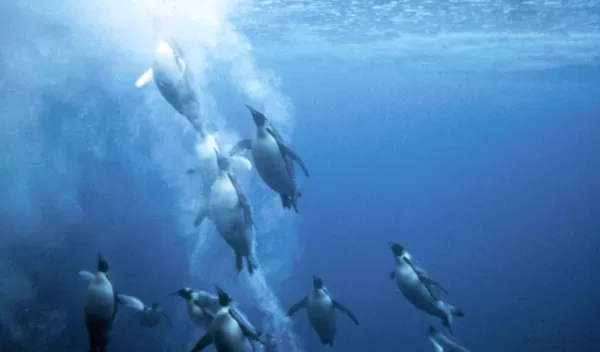
Banks of Antarctica's Ross Sea offer rich food source for emperor penguins
A new U.S. National Science Foundation-supported study provides some of the most comprehensive evidence to date of the lengths penguins will go for a meal. The results were reported in the journal Polar Biology.
Scientists led by Gerald Kooyman of Scripps Institution of Oceanography analyzed more than 80,000 foraging dives made by emperor penguins over a 22-year period. On more than 1,400 of those dives, the penguins dove deeper than 400 meters (1,300 feet) in search of their favorite prey.
To get to the place where they made their dives, the penguins traveled some 100 kilometers (60 miles) from their breeding grounds at Antarctica's Cape Washington to a raised area of the seafloor called Crary Bank. Banks tend to draw large aggregations of fish, making them popular among fishing fleets in parts of the world. At Crary Bank, the penguins' preferred prey, the Antarctic silverfish, is abundant.
During deep dives, the penguins often exceeded their oxygen storage limits for aerobic metabolism and developed an oxygen debt, meaning they used up their oxygen supply but used other physiological means to continue the dives, said Kooyman, a research physiologist at Scripps Oceanography.
This debt required a prolonged recovery of 15 to 20 minutes after each dive, compared to two to three minutes for shorter dives. The deep dives are possible because the birds are heading to a place where the prey are concentrated and easy to catch with minimal effort.
"We do not know of any similar seafloor feature near emperor penguin colonies," Kooyman said. "It is likely not coincidental that the two largest emperor penguin colonies are near this large, reliable and rich resource. It's exciting to think of a flock of penguins cruising through the darkness of the deep bottom, 450 meters (1,476 feet) from the surface, hunting for their prey."


